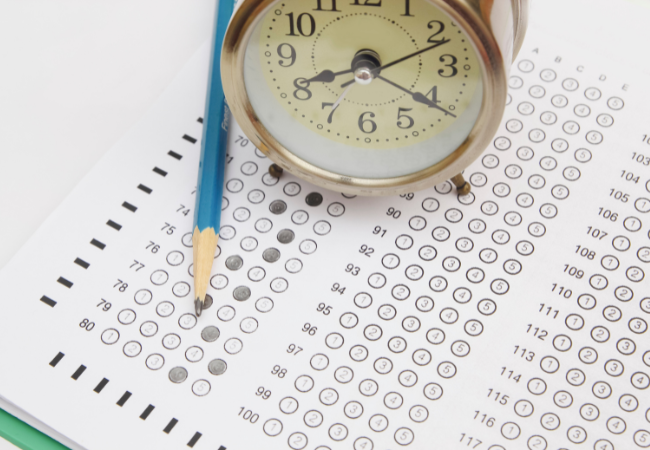Keeper Standard Test: A Journey Through Quality and Excellence

the Keeper Standard Test stands as a beacon of assurance, guiding us through the labyrinth of excellence. This article will unveil the layers of this fascinating test, a silent guardian of standards that ensure the highest benchmarks are met. Join me on this poetic journey as we explore the Keeper Standard Test, its essence, and its profound impact on various domains.
Understanding the
What is the Keeper Standard Test?
At its heart, the Keeper Standard Test is a meticulous evaluation designed to measure and ensure quality across different fields. Imagine a guardian at the gates of excellence, scrutinizing every detail to uphold the highest standards. This test serves as a critical tool for assessing quality, reliability, and performance, ensuring that only the best pass through.
The Origins and Evolution of the Keeper Standard Test
The origins of the Keeper Standard Test are steeped in the annals of history, where the quest for quality began. From its humble beginnings as a basic checklist, it has evolved into a sophisticated assessment tool. Its journey mirrors our relentless pursuit of perfection, adapting and growing with technological advancements and changing societal needs.
Importance of the
Ensuring Quality and Reliability
Quality is the silent promise we make to ourselves and our patrons. The Keeper Standard Test ensures that this promise is kept. By setting rigorous benchmarks, it helps maintain consistency and reliability, whether in products, services, or educational outcomes.
Benchmarking Excellence in Various Fields
In a world brimming with choices, how do we distinguish the best from the rest? The Keeper Standard Test provides a clear, objective benchmark. It sets the gold standard, enabling industries and educational institutions to strive for and achieve unparalleled excellence.
Components of the
Core Elements and Criteria
The is composed of several core elements, each meticulously designed to measure specific aspects of quality. These elements include performance metrics, reliability indices, and safety standards. Together, they form a comprehensive framework that leaves no stone unturned.
The Scoring System Explained
Understanding the scoring system of the is like deciphering the language of excellence. Each component is weighted according to its importance, and scores are assigned based on rigorous evaluation. The result is a precise measurement of quality that speaks volumes about the subject being tested.
Applications of the Keeper Standard Test
Industrial and Manufacturing Uses
In the industrial and manufacturing sectors, the is the sentinel of quality control. It ensures that products meet safety and durability standards, protecting consumers and enhancing brand reputation.
Educational Assessments
In education, the is the yardstick that measures academic performance. It helps set educational benchmarks, guiding institutions in their quest to provide the best learning experiences.
The Keeper Standard Test in Education
Evaluating Academic Performance
Education is the foundation upon which we build our future. The Keeper Standard Test evaluates academic performance, ensuring that students meet the required standards of excellence. It provides educators with valuable insights, helping them tailor their teaching methods to better serve their students.

Setting Educational Benchmarks
Benchmarks are crucial in education, providing clear goals for students and educators alike. The Keeper Standard Test sets these benchmarks, offering a roadmap to academic success and excellence.
Keeper Standard Test in Industries
Manufacturing Quality Control
In the world of manufacturing, quality is non-negotiable. The Keeper Standard Test ensures that every product leaving the factory meets the highest standards of quality and safety. It is the unseen hand that maintains the integrity of the manufacturing process.
Assessing Product Durability and Safety
Durability and safety are paramount in product manufacturing. The Keeper Standard Test assesses these critical aspects, ensuring that products can withstand the test of time and use without compromising safety.
Implementation of the Keeper Standard Test
Steps to Integrate into Systems
Implementing the Keeper Standard Test into existing systems requires careful planning and execution. It involves setting up the necessary infrastructure, training personnel, and establishing clear guidelines. The goal is to seamlessly integrate the test into the workflow, ensuring that quality checks become an integral part of the process.
Overcoming Common Challenges
Every implementation comes with its own set of challenges. Common obstacles include resistance to change, lack of resources, and technical difficulties. Overcoming these challenges requires a strategic approach, including stakeholder engagement, resource allocation, and continuous monitoring and improvement.
Case Studies of the Keeper Standard Test
Success Stories from Various Sectors
The success of the Keeper Standard Test is evident in numerous case studies across different sectors. From manufacturing to education, it has consistently proven its worth. These success stories highlight its versatility and effectiveness in ensuring quality and excellence.
Lessons Learned from Failures
Not every implementation is a success story. There are valuable lessons to be learned from failures as well. These lessons help refine the Keeper Standard Test, making it more robust and adaptable to various contexts and challenges.
Future of the Keeper Standard Test
Innovations and Technological Advancements
The future of the is bright, with innovations and technological advancements paving the way for more sophisticated assessments. Emerging technologies such as AI and machine learning are set to revolutionize the way we evaluate quality, making the test more accurate and efficient.
Predictions and Trends
As we look to the future, several trends are emerging in the realm of quality assessment. These include a greater emphasis on sustainability, increased customization of testing protocols, and a focus on holistic evaluations that consider a wider range of factors.
Global Perspectives on the Keeper Standard Test
Adoption in Different Countries
The has gained global recognition, with countries around the world adopting it to ensure quality and excellence. Each country brings its unique perspective, adapting the test to meet its specific needs and standards.
Cultural and Regional Adaptations
Cultural and regional differences play a significant role in the implementation of the. These adaptations ensure that the test remains relevant and effective across diverse contexts, respecting local customs and practices.
Challenges and Criticisms
Common Critiques and Misconceptions
No system is without its critics. The faces several common critiques and misconceptions, including concerns about its rigidity and potential biases. Addressing these concerns is crucial to maintaining its credibility and effectiveness.
Addressing and Overcoming Barriers
Overcoming barriers requires a proactive approach. This involves addressing criticisms head-on, refining the test based on feedback, and ensuring that it remains flexible and adaptable to changing needs and contexts.
How to Prepare for the
Tips and Strategies for Success
Preparation is key to success in the . Tips and strategies include thorough understanding of the test criteria, regular practice, and seeking guidance from experts. Resources such as study guides and practice tests can also be invaluable.
Resources and Study Guides
There are numerous resources available to help prepare for the. These include official study guides, online tutorials, and practice tests. Utilizing these resources can significantly enhance your chances of success.
Expert Opinions on the
Interviews with Industry Leaders
Industry leaders provide valuable insights into the. Their experiences and perspectives highlight the test’s significance and offer practical advice for those looking to excel.
Academic Perspectives
Academics bring a different viewpoint, emphasizing the theoretical foundations and educational implications of the Their insights help bridge the gap between theory and practice, enhancing our understanding of the test.
Conclusion
The Enduring Significance of the Keeper Standard Test
The stands as a testament to our quest for quality and excellence. Its enduring significance lies in its ability to adapt and evolve, ensuring that it remains relevant in a rapidly changing world.
Final Thoughts and Reflections
As we reflect on the Keeper Standard Test, we are reminded of the importance of maintaining high standards in everything we do. This test serves as a beacon, guiding us towards a future where quality and excellence are not just goals but realities.
FAQs
Q1: What is the primary purpose of the?
The primary purpose of the is to evaluate and ensure quality, reliability, and performance across various fields.
Q2: How has the evolved over time?
The has evolved from a basic checklist to a sophisticated evaluation tool, incorporating technological advancements and adapting to changing societal needs.
Q3: What are the key components of the?
The key components include performance metrics, reliability indices, and safety standards, forming a comprehensive framework for quality assessment.
Q4: How is the implemented in industries?
It is implemented through careful planning, infrastructure setup, personnel training, and establishing clear guidelines to seamlessly integrate quality checks into the workflow.
Q5: What are the future trends in the?
Future trends include the use of AI and machine learning for more accurate assessments, increased focus on sustainability, and customized testing protocols.



